better homes & gardens ventura 7.5 fringe patio umbrella
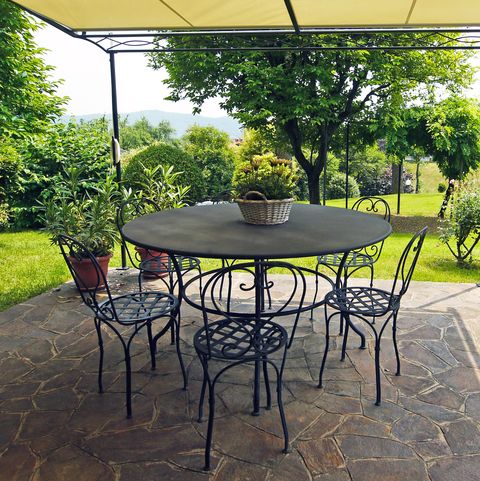
Rosmarie Wirz Getty Images
There's a lot to consider when it comes to planning your perfect garden patio. You have to think about how you intend to use your outdoor retreat, the paving you will use, the right furniture to fit the space, your budget, any additional costs you'll incur, the list goes on...
But help is at hand for amateur gardeners looking to revitalise their outdoor space. Garden landscaping manufacturer, Bradstone, have shared their top tips to help you plan effectively and maximise the potential of your garden, whatever the size or budget.
1. Keep your objective in mind
Whether you're sprucing up your garden to increase the value of your home, or creating a usable space for your friends and family to enjoy, keeping the main objective in mind will ensure cohesion and keep your budget firmly on track.
2. Patio positioning and privacy
When you start to plan, think about the best position for your patio. Where does the sun sit in your garden at the time you're most likely to use it? Also consider how you can take advantage of any views you have, or alternatively, create a private retreat so you can enjoy relaxing in your garden without being overlooked.

Mint Images Getty Images
3. Think about size
Whether you're planning a cosy space for two, an area for the family to dine alfresco, or even an outdoor kitchen for entertaining, size is key. Ensure the furniture you have or are looking to buy fits the space perfectly, allowing plenty of room to walk around it.
4. Consider zonal spaces
A great way to add zones to your patio is to create split levels with stepped areas. You can also create zones in more cost-effective ways by using plants combined with features such as paving circles, walling and edging.
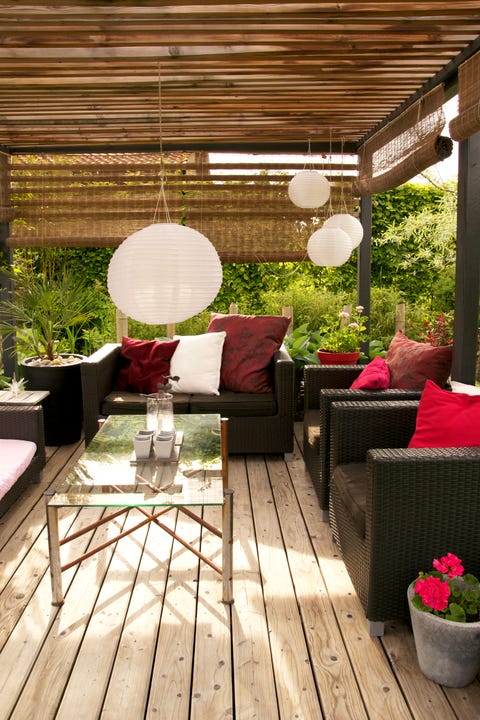
Eirasophie Getty Images
5. It's all about style
The way you choose to decorate your home and design your garden is a reflection of your personal style. While incorporating your individual tastes, remember to be sensitive to the style of your house too. A modern house will suit more contemporary paving styles, while traditional paving lends itself well to period properties.
6. Set a budget
Knowing what you want to spend and tracking your purchases is an important part of the planning process. Whether you need to account for a professional landscaper or you want to splurge on new planting, setting a budget at the start of the project will mitigate any overspend.

KatarzynaBialasiewicz Getty Images
7. Consider design trends
If you want to be at the forefront of garden design trends, minimalistic contemporary design with an indoor/outdoor lifestyle using tones of silver and grey is where you need to head. In terms of materials, porcelain products are becoming increasingly popular, with concrete widely used with interior and exterior design for its industrial chic look.
8. Account for drainage and access
Using a professional will ensure that all the necessary groundworks and building regulations are covered, but if you're more of the DIY type, then think about access into your property, how rainwater will drain, and if there are any trees or manhole covers you'll need to navigate.
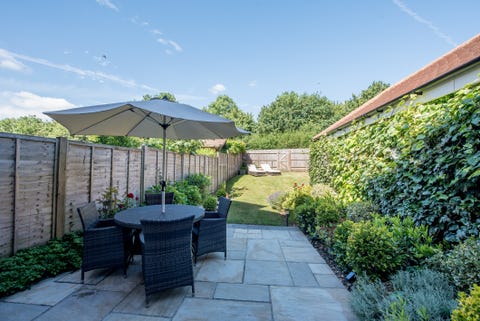
John Keeble Getty Images
9. Plan it out first
Put pen to paper and draw out the garden to even the most basic scale, having it in front of you will help you to plan your patio and wider garden more effectively.
10. Choosing materials
Always do your research! Whether you opt for concrete, natural stone or porcelain, each come with their own features and benefits so it's important for you to research these in order to pick the one best suited to your needs.
Like this article? Sign up to our newsletter to get more articles like this delivered straight to your inbox.
SIGN UP
Top 12 herbs and how to use them

Basil
Why: Works well with tomatoes or fish, or use to make a traditional pesto sauce.
Which: For Italian-style cooking, look out for sweet Genovese or Napoletano. For variety, try Greek, lettuce leaf or aniseedy Thai.
BUY SEEDS

Parsley
Why: Excellent in sauces, soups, stuffings, dressings and salads, and as a garnish.
Which: Both curly and flat-leaf varieties are resilient and will keep going well into autumn, and even winter if protected with a cloche.
BUY SEEDS

Lemon thyme
Why: The aromatic foliage is versatile for cooking and attractive to wildlife.
Which: Lemon and golden varieties look lovely in pots. Plant creeping thymes between gaps in paving for subtle scent.
BUY PLANT

Chervil
Why: Its subtle aniseed flavour is greatfor soups, sauces, egg dishes and more.
Which: Curled chervil is a popular variety with pretty foliage and grows quickly from seed. Sow regularly for a constant supply.
BUY SEEDS
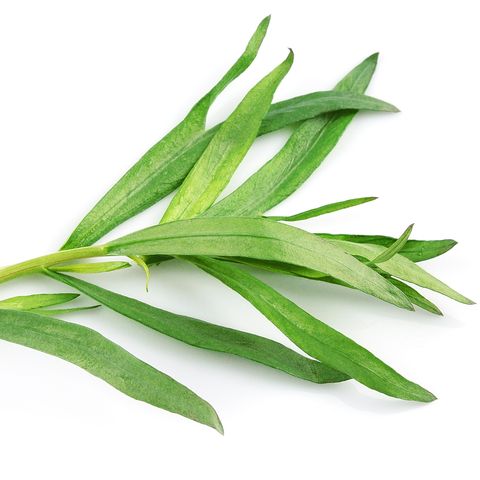
Tarragon
Why: A staple in French cooking and a classic way to add oomph to potato salad.
Which: Look out for French tarragon. The leaves are best used fresh but they can be stored or dried in an air-tight container.
BUY SEEDS

Coriander
Why: Delicious added to rice, couscousand curries. Add the flowers to salads.
Which: Coriander is quick to go to seed (called bolting) so try a bolt-resistant variety such as Santos and pick leaves young.
BUY SEEDS

Oregano
Why: Strong and pungent, this is a classic herb for Italian, Greek and Mexican cooking and is often used dried rather than fresh.
Which: Look out for dwarf variety Kent Beauty, Common or Compact Greek.
BUY SEEDS
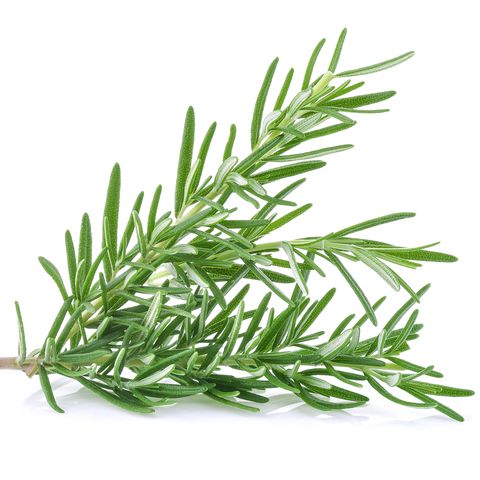
Rosemary
Why: A classic accompaniment to lamb, pork and chicken dishes.
Which: Most varieties are suitable for culinary use. Once established outside, rosemary will keep growing for years.
BUY PLANT

Bay
Why: Use in soups, stews and potato dishes. Dried is fine as the leaves retain their flavour.
Which: Common bay has dark, aromatic leaves but also look out for hardier Angustifolia and Aurea varieties.
BUY PLANT

Mint
Why: Use for everything from tea to mojitococktails and mint sauce for lamb.
Which: Common varieties include apple mint, English lamb mint and spearmint (also known as garden mint).
BUY PLANT

Sage
Why: The leaves work well with chicken and are good in classic sage-and-onion stuffing.
Which: Look out for common sage or try the broad-leaved variety. Buy as a ready grown plant or grow from seed or cuttings.
BUY PLANT

Dill
Why: Commonly used for potatoes and fish or add to soups, sauces and salads.
How: Grow from seed, simply by scattering in the desired location after the last frost and cover lightly with soil.
BUY SEEDS
Olivia Heath Executive Digital Editor, House Beautiful UK Olivia Heath is the Executive Digital Editor at House Beautiful UK where she's busy uncovering tomorrow's biggest home trends, all whilst delivering stylish room inspiration, small space solutions, easy garden ideas and house tours of the hottest properties on the market.
This content is created and maintained by a third party, and imported onto this page to help users provide their email addresses. You may be able to find more information about this and similar content at piano.io
better homes & gardens ventura 7.5 fringe patio umbrella
Source: https://www.housebeautiful.com/uk/garden/a1570/patio-garden/
Posted by: darcystento.blogspot.com

0 Response to "better homes & gardens ventura 7.5 fringe patio umbrella"
Post a Comment